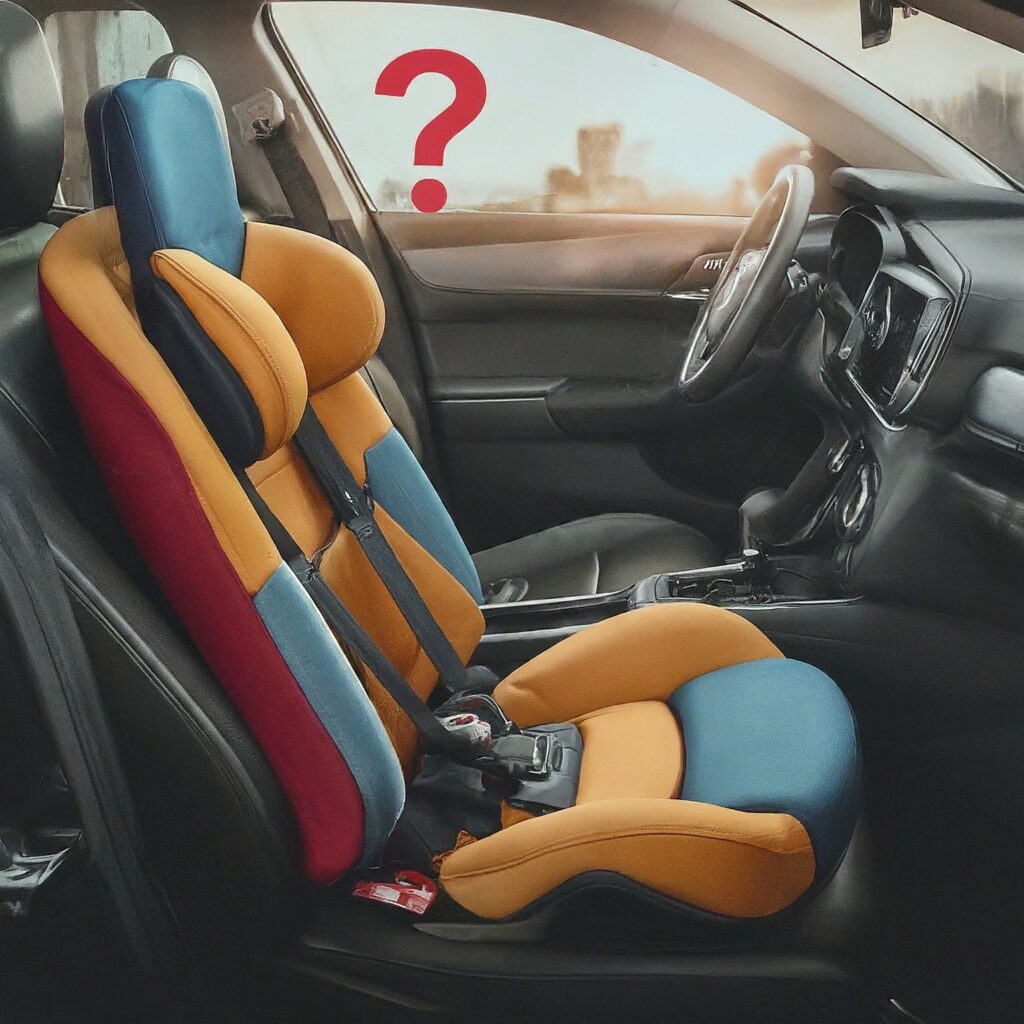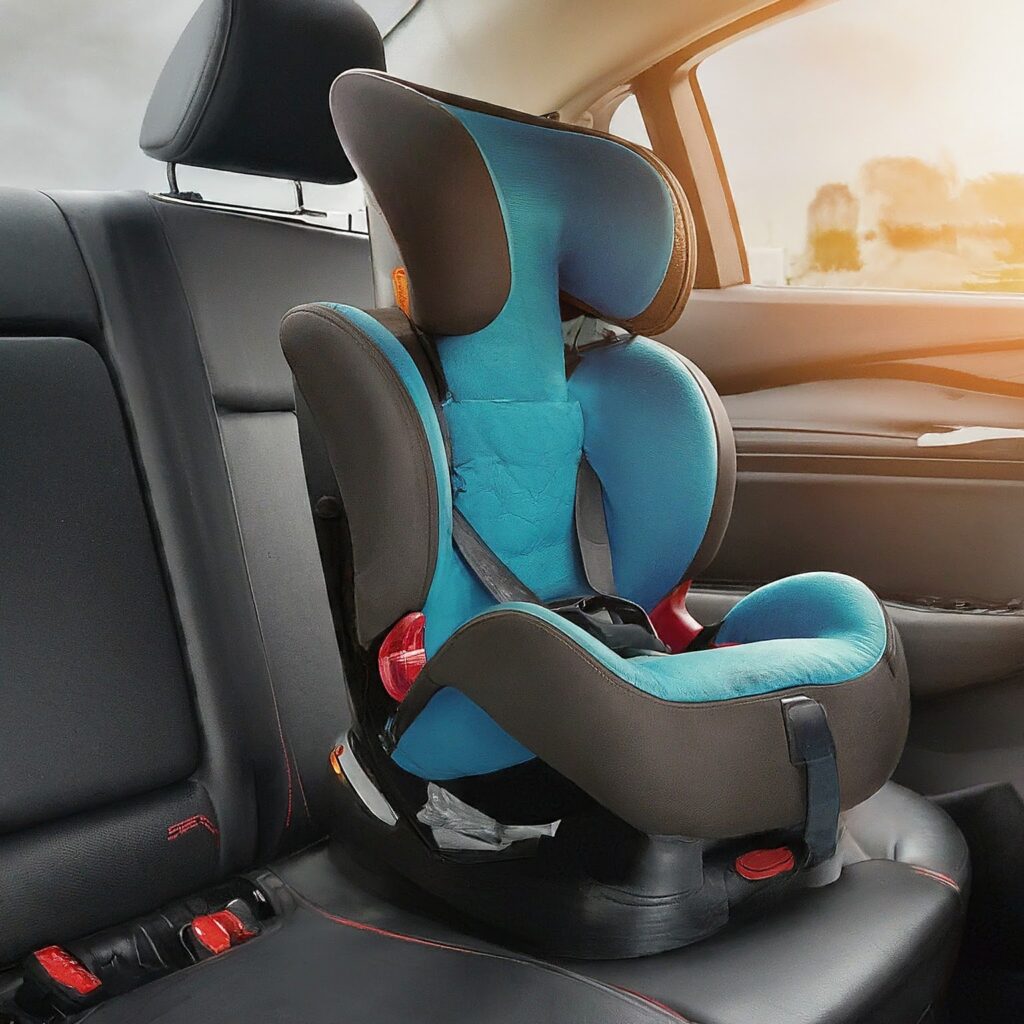What is the Age and Weight for the Front Seat?

In the US, there’s no set age or weight limit for the front seat. But experts recommend waiting until your child is 13 years old. Prioritizing your child’s safety means keeping them in the back whenever possible. Front airbags and seat belts designed for adults pose a danger to young children in the front. This guide dives deeper into why the back seat is the safest place for your child, regardless of age or weight. We’ll explore the risks of the front seat, recommended practices for child car safety, and resources to guide you on choosing the right car seat for every stage of your child’s growth.
Age and Weight Limits: What the Law Says (or Doesn’t Say)
When it comes to child car safety, many parents wonder about the legalities of where their child can sit in the car. While car seat laws are in place to ensure proper restraint for young children, there’s a surprising fact: in the United States, there’s no single federal law mandating a specific age or weight limit for children riding in the front seat.
This might seem counterintuitive, especially considering the abundance of safety regulations surrounding car seats. However, individual states sometimes have their own laws regarding front-seat passengers, though these typically focus on seat belt use rather than age or weight restrictions.
The absence of a legal age limit doesn’t negate the importance of prioritizing your child’s safety. While some older children might technically be able to sit in the front seat, depending on your state’s laws, it’s crucial to understand the significant risks involved before allowing them to do so.
Why the Back Seat is Always the Safest Place

While the lack of a legal age limit might seem surprising, there are compelling reasons why the back seat is undeniably the safest place for your child, regardless of their age or weight. Here’s why:
- Airbag Danger: Front airbags are designed to deploy with immense force in a crash to protect adults. This force can be extremely dangerous for young children in the front seat, potentially causing serious injuries or even death.
- Improper Seat Belt Fit: Standard car seat belts are designed for adult bodies. A child in the front seat might not be positioned correctly or secured properly by the belt, increasing their risk of injury during an accident.
- Maturity Matters: Younger children might not fully understand the importance of staying seated and buckled up throughout the entire ride. They could be more easily distracted or try to move around in the front seat, putting them at a higher risk of getting hurt.
Why Are Airbags Dangerous For Children
Airbags are designed to be lifesavers for adults in a car crash, but for children, they can pose a significant danger. Here’s why:
- Forceful Deployment: Airbags inflate with tremendous force (up to 200 mph) in a fraction of a second to protect adults in a crash. This immense force can be very dangerous for a child sitting in the front seat, potentially causing serious injuries or even death.
- Improper Size Match: Standard airbags are designed for the average adult body size and position. A child in the front seat wouldn’t be positioned correctly relative to the airbag. The deploying airbag could strike the child directly in the head or neck, or propel them forward with excessive force, causing severe injuries.
- Risk of Neck and Spinal Injuries: Children have weaker neck muscles and developing spines compared to adults. The sudden jolt from an airbag deployment can cause serious neck and spinal injuries in a child.
Here’s a breakdown of the specific dangers for children in different seating positions:
- Front Seat: This is the most dangerous position for a child due to the close proximity to the airbag. The forceful deployment can cause serious injuries as mentioned above.
- Rear Seat with Front Airbag: While the back seat is generally safer, if there’s a front passenger airbag, it can still pose a risk to a young child if they’re leaning forward or not properly restrained in a correctly installed car seat.
Child Car Seat Safety Recommendations
Here are some resources from reputable organizations to guide you on choosing the right car seat for your child’s age and size:
Life stages and car seat safety
Keeping your child safe on the road is a top priority. As your little one grows, their car seat needs will evolve too. Here’s a breakdown of the different life stages and the car seats that ensure optimal safety throughout their development:
1. The Newborn Stage: Rear-Facing for Maximum Protection (0-1 Years Old, Up to 40 Pounds)
- Tiny travelers need the most protection. For newborns and infants, a rear-facing convertible car seat is the absolute safest option.
- Rear-facing cradles your baby’s fragile spine and distributes crash forces evenly. This significantly reduces the risk of head and neck injuries in the event of an accident.
- Most convertible car seats have extended rear-facing weight and height limits. Keep your child rear-facing for as long as possible, ideally until they reach the maximum limits of their car seat.
2. The Toddler Stage: Transitioning to Forward-Facing (1-4 Years Old, 22-40 Pounds)
- Once your child outgrows their rear-facing weight or height limits, it’s time to transition to a forward-facing position.
- Choose a car seat with a five-point harness system. This provides optimal restraint and distributes crash forces across the strongest parts of your child’s body.
- Ensure the harness straps are snug at the shoulders and the chest clip is level with your child’s armpits. A loose harness reduces effectiveness in a crash.
3. The Preschooler Stage: Booster Seats for Growing Bodies (4-8 Years Old, 40-80 Pounds)
- As your child surpasses the harness weight or height limits of their forward-facing car seat, it’s time for a booster seat.
- Booster seats position your child correctly so the adult seat belt fits snugly across their hips and chest. A properly fitting seat belt is crucial for optimal protection in a crash.
- Look for a booster seat with a comfortable design and features like adjustable headrests and side impact protection.
4. The Big Kid Stage: Graduating to the Adult Seat Belt (8 Years Old and Up, Over 80 Pounds)
- Once your child reaches at least 4 feet 9 inches tall and can comfortably wear the adult seat belt without slouching, they can transition to using the car’s seat belt alone.
- The lap belt should rest snugly across their hips, not their stomach, and the shoulder belt should lie across their chest, not their neck or arm.
Remember:
- Always follow the weight and height limits of your car seat. Don’t rush to move your child to the next stage before they’re ready.
- Register your car seat with the manufacturer. This ensures you receive notifications of any recalls or safety updates.
- Never use an expired or secondhand car seat. Expired car seats may not meet current safety standards, and secondhand car seats might have hidden damage.
Conclusion
While there might not be a specific legal age restriction for children riding in the front seat, prioritizing your child’s safety is paramount. The back seat is undeniably the safest place for children of all ages. By following the recommendations outlined above and using a correctly installed, age-appropriate car seat, you can significantly enhance your child’s safety during car rides. Remember, every ride is an opportunity to teach your child about car safety habits that will stay with them for life.
